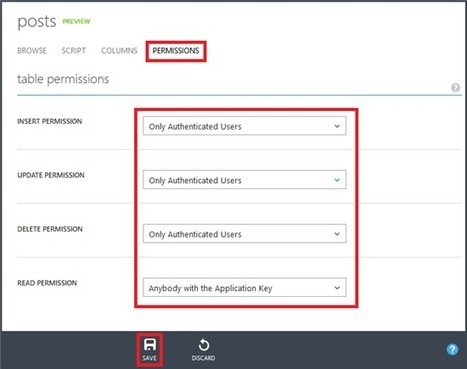In the previous posts (1, 2, 3) I covered creating an Ember.js-based single page application, then wiring it up to Windows Azure Mobile Services for data storage. But currently it allows everyone to post anonymously. I at least want some basic authentication so I can verify the user is a real person and maybe hold them accountable for things they post.
Windows Azure Mobile Services makes it trivially easy to set up authentication using Facebook, Google, Microsoft account (formerly LiveID), or Twitter as the authentication provider.




 Your new post is loading...
Your new post is loading...









